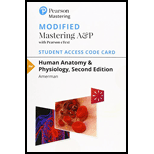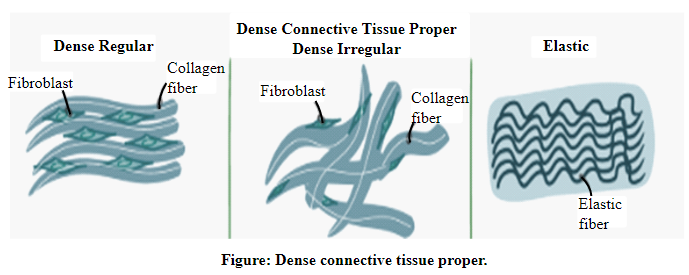
Concept explainers
Explain how connective tissues differ from epithelial tissues in structure and function.
To review:
The difference between connective tissues and epithelial tissues, based on their structure and function.
Introduction:
Tissues are a group of cells that have a specific function. In a living organism, tissues are of four types, namely, epithelial tissue, connective tissue, muscle tissue, and connective tissue. The function and structure of these tissues vary from each other.
Explanation of Solution
The difference between connective tissues and epithelial tissues is given in the following table:
| Connective tissue | Epithelial tissue |
| This group of tissues connects different tissues with each other. | Epithelial tissue is the most abundant tissue as it covers the cavities and the surface of the body. |
| They have an extracellular matrix (ECM) where cells are scattered. Fibers and ground substances, are important structural parts of ECM. | The cells are arranged in a sheet-like manner with little ECM. There are no blood vessels in epithelial tissues. |
| Connective tissues are classified into proper connective tissue and specialized connective tissue. | Based on the tissue layer, epithelial tissues can be classified into simple and stratified. Simple epithelia have a single layer, whereas stratified epithelia have more than one layer. |
| Specialized connective tissues are cartilage, bone, and blood. Proper connective tissues are again classified into loose connective tissues, dense connective tissues, reticular tissues, and adipose tissues. | They are seen in three different principal shapes, namely, squamous, columnar, and cuboidal. |
| Blood is an example of a connective tissue. It transports nutrients and oxygen to various organs. Connective tissues provide support to our skeletal system. An example of a connective tissue that provides support is cartilage and dense connective tissue. | Epithelial tissues act as a barrier against mechanical and thermal injury. The best example is skin. |
The diagrams showing the structures of different types of connective and epithelial tissues are shown below:




Thus, it can be concluded that the two tissue classifications, namely, epitheliumand connective tissues, play a major role in the defense mechanism of the body. Based on their composition, they can also be further classified into different types.
Want to see more full solutions like this?
Chapter 4 Solutions
Modified Masteringa&p With Pearson Etext -- Standalone Access Card -- For Human Anatomy And Physiology
- Briefly state the physical meaning of the electrocapillary equation (Lippman equation).arrow_forwardExplain in a small summary how: What genetic information can be obtained from a Punnet square? What genetic information cannot be determined from a Punnet square? Why might a Punnet Square be beneficial to understanding genetics/inheritance?arrow_forwardIn a small summary write down:arrow_forward
- Not part of a graded assignment, from a past midtermarrow_forwardNoggin mutation: The mouse, one of the phenotypic consequences of Noggin mutationis mispatterning of the spinal cord, in the posterior region of the mouse embryo, suchthat in the hindlimb region the more ventral fates are lost, and the dorsal Pax3 domain isexpanded. (this experiment is not in the lectures).a. Hypothesis for why: What would be your hypothesis for why the ventral fatesare lost and dorsal fates expanded? Include in your answer the words notochord,BMP, SHH and either (or both of) surface ectoderm or lateral plate mesodermarrow_forwardNot part of a graded assignment, from a past midtermarrow_forward
 Human Biology (MindTap Course List)BiologyISBN:9781305112100Author:Cecie Starr, Beverly McMillanPublisher:Cengage Learning
Human Biology (MindTap Course List)BiologyISBN:9781305112100Author:Cecie Starr, Beverly McMillanPublisher:Cengage Learning Human Physiology: From Cells to Systems (MindTap ...BiologyISBN:9781285866932Author:Lauralee SherwoodPublisher:Cengage Learning
Human Physiology: From Cells to Systems (MindTap ...BiologyISBN:9781285866932Author:Lauralee SherwoodPublisher:Cengage Learning
 Biology: The Unity and Diversity of Life (MindTap...BiologyISBN:9781305073951Author:Cecie Starr, Ralph Taggart, Christine Evers, Lisa StarrPublisher:Cengage Learning
Biology: The Unity and Diversity of Life (MindTap...BiologyISBN:9781305073951Author:Cecie Starr, Ralph Taggart, Christine Evers, Lisa StarrPublisher:Cengage Learning





